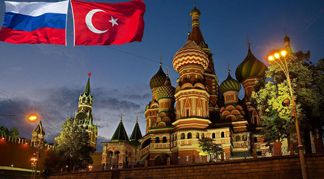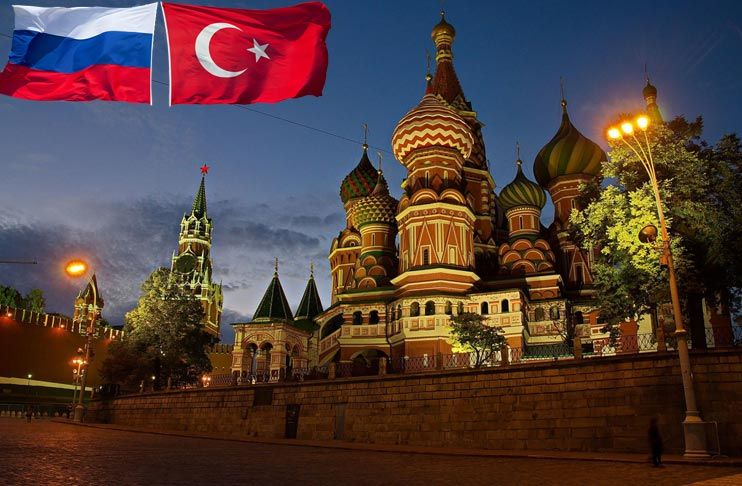
A waking giant: Russia! With an income of 1.4 trillion USD, Russia continues their role of main actor for our region. Former superpower Russia seems to return to the playfield with their economic power as well as their military power.
While once one of the two superpowers of a bipolar world, having an economic and political system crush in 90s, Russia is rising again as a force to be reckoned. With Putin presidency, the Russian federation is playing for both the political and economic leadership in their region. This natural resource rich country has become one of Turkey’s most important partners in bilateral trade partnership both in exports and in imports. So what opportunities Russian economy’s base features present to us? Here is Russia by numbers and an analysis of a waking giant…
With 142 million population, Russian Federation’s 2017 GNP has reached 1.4 trillion USD and the national income per capita has reached around 11 thousand USD. Having over 17 million square meters of surface area, big companies are the main actors of Russian economy. In addition to this, SME ratio is around 10-15%. Russian economy is especially focusing on development of the heavy industry while the development of consumer goods and light industry is on a slower pace. High oil prices are shown as the main culprit for the country’s rapid growth for the last 10 years. Russian economy is expected to grow around 1.7 – 1.8 in 2018 and 2019.
A waking giant: Russia! Russian exports surpasses their imports
By 2016, Russia is the world’s 16th biggest exporter (286 billion USD) and 25th biggest importer (182 billion USD). Oil being in the first place, natural resource rich Russia’s most featured export products are; crude oil, petroleum oils, coal, raw aluminium and diamonds. Some of the imported products by the country are; medicine, apparels for landline telephones, automobiles, land vehicle parts, etc. Netherlands is in the first place for Russian exports with 29.3 billion USD. China with 28 billion USD is in the second place while Germany is third with 21.3 billion USD. Turkey is in the 5th place in Russian exports with 13.7 billion USD. While China is in the 1st place in Russian exports with 38.1 billion USD, Germany follows them with 19.4 billion USD and USA is third with 11.1 billion USD. Turkey is 22nd in Russian exports with 2.1 billion USD.
Turkey’s import to Russia has reached its peak in 2013 with 7 billion USD. Turkey’s biggest export from Russia was in 2012 with 26.6 billion USD. In 2017, Russia is the 3rd country that Turkey has most exported (20 billion 104 million USD) from.
Russian market has to be paid attention to in textile and garment exports
With 2016 numbers, Russian Federation has 1.3% share with 5.9 billion value in the world ready-to-wear and apparel imports which has a total value of 453.5 billion USD. Most important partners of Russia in this imports is China with 40.5% share and a value of 2.4 billion USD. While Turkey is only 8th in ready-to-wear and apparel import to Russia with 2.3% share. China is again 1st in Russia’s textile products supply with 26.7% share. China exports a total of 643.1 billion USD textile to Russia. While Turkey’s textile export to Russia is 47.2 million USD. Turkey was 10th biggest supplier in Russia’s textile export with 2% share.
According to İHKİB’s (İstanbul Apparel Exporters’ Association) report, Turkey exports to Russia these ready-to-wear and apparel products; outerwear (83.4%), underwear (3%), infant clothing (1.8%), sports and swim wear (0.9%), socks (3.9%) and other ready-to-wear articles (5.6%). Still according to the same report the most exported textile products are; fibres (9.8%), yarn (16.8%), weaved fabric (26.9%), knitted fabric (10.9%) and other textile products (35.4%).
Russia is not amongst the 10 biggest economies Turkey exports textile and its raw materials to in the entirety of 2017. More than half of our textile export is to EU countries. Steps taken to increase our textile export to Russian Federation has the potential to bear fruits in a very short amount of time.
As we can see from the sudden drop in agricultural exports and in tourism after the plane shooting crisis in 2015, political crises and solutions are directly affecting the economy between two countries.

